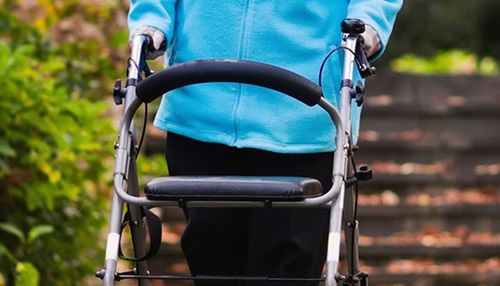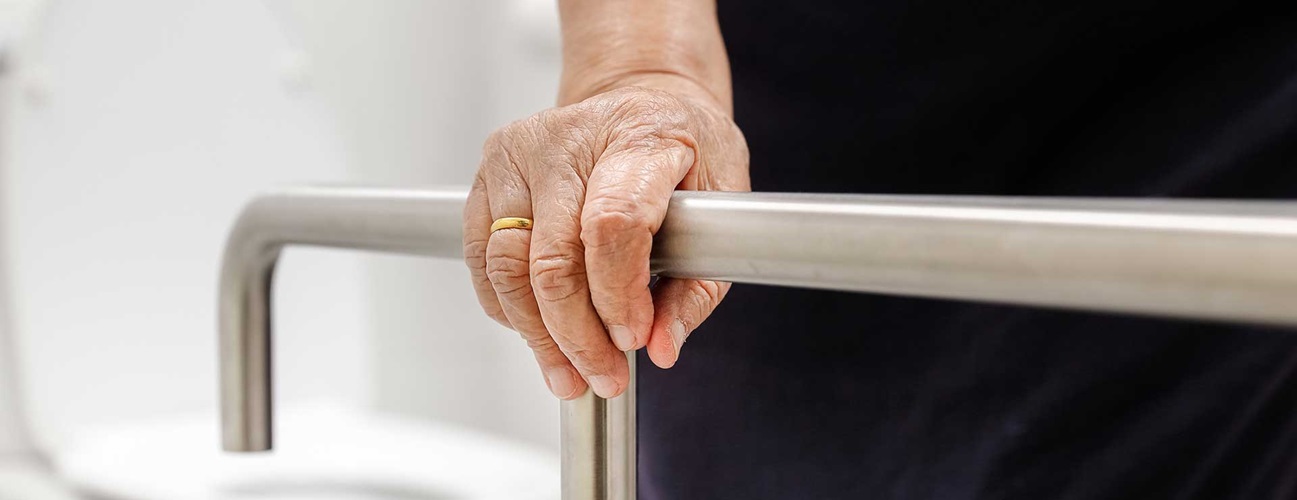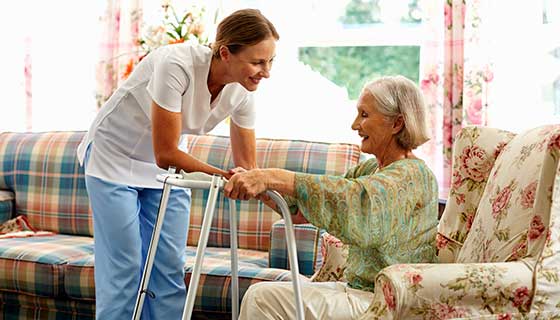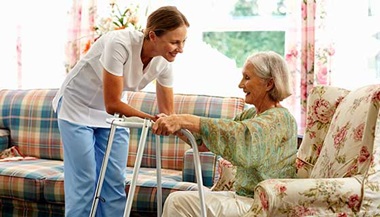4 Ways to Improve Fall Safety
Every year, nearly one in three adults age 65 and older fall, according to the Centers for Disease Control. Your risk of falling increases as you age. Although many falls don’t cause serious injury, falls remain the cause of nearly all hip fractures and the most common cause of traumatic brain injuries. Still, almost half of the adults who fall don’t tell their doctor or family, fearing a loss of independence or a potential move to an assisted living facility.
While falls are a real danger for older adults, they aren’t an inevitable part of aging. Simple precautions can reduce your fall risk long before an injury happens. In fact, careful adaptation can allow you to stay in your home and in control of your life even after a fall.
Stay active
Staying active is the simplest way to reduce fall risk. “Anyone aging from midlife on should keep up regular activity to maintain core muscle and leg strength as they transition into early old age and beyond,” says Hopkins ElderPlus Medical Director Matthew McNabney, M.D. It’s important to stay mobile and avoid a sedentary lifestyle, according to McNabney. Instead of engaging in strenuous exercise, choose “activities that are pleasurable” such as walking or yoga.
Watch for warning signs
Falls rarely happen without warning. Often, people will start showing signs of instability, balance or frailty, says Dr. McNabney. However, your primary care provider may not focus on balance issues and fall risk. If you have questions or concerns, be sure to ask your doctor. Recognizing these warning signs can reduce the risk of falls and the hospitalizations that may accompany them:
- Unsteadiness walking. Unsteadiness over uneven surfaces—even the difference between a rug and a hardwood floor—can present a fall risk. After a safety evaluation, your primary care provider may recommend physical therapy or a mobility aid such as a cane or walker.
- Vision problems. Worsening eyesight makes it harder to see obstacles and maintain balance. An eye exam can help you identify any vision problems.
- Medication side effects. The medications you take may have side effects that could compromise your stability and balance. For example, blood pressure medicine, diuretics and antihistamines may cause lightheadedness or dizziness. You should do a careful review of your medications—both prescription and nonprescription—with your primary care provider.
Remove risks at home
The key to living at home is to “acknowledge and adapt to limitations instead of suppressing them,” says Dr. McNabney. Rather than improving their surroundings, many older adults “become fearful and decrease their personal space” even before a fall. This reduction in activity increases the risk of falling further and has psychological risks. A physical therapist can help identify any unique risks in your home to provide both peace of mind and greater physical safety. The following are the most common risk areas in the home:
- The bathroom. The bathroom is uniquely risky since it requires moving between many varied positions. Toilets and bathtubs are often not arranged well for people with mobility issues. Shower or bath chairs and hand bars are common adaptations.
- Uneven floors and stairs. Thresholds, rugs, thick carpets and floor clutter can be dangerous for adults with balance issues or reduced step height. Once you’re aware of these areas, the removal of rugs, floor clutter and other uneven surfaces will reduce your fall risk.
- The kitchen. Working in the kitchen often requires many changes in position, including bending down, turning and pivoting. Rearranging kitchen items can help minimize risk.
- Low light. The ability to see in low light decreases with age. Adding brighter light bulbs or more lights to the home can reduce fall risk.
- Stairs. Stairs should be used as long as it remains safe to do so. Adding a hand rail increases security and confidence.
Report a fall
Reporting a fall is essential. “Being as open as possible about your fall is vital to your long-term safety,” says Dr. McNabney. “Since many people think that falling is an indicator of decline, they may try to keep it quiet so they won’t have to leave their home.” However, covering up your fall means that there’s no opportunity for your doctor to understand the circumstances surrounding the fall. This increases the chance of another, potentially more serious fall in the future. Your physician will help you take the steps necessary to continue to live your life as fully as possible.
Try It Medical Alert Devices
Worn around the neck or on the wrist, medical alert devices can give you a sense of security when you’re home alone. In addition to the standard call function, some alerts have sensors that can detect and automatically report a fall. Combined with cell phones, alert devices help you live independently with confidence, knowing that you can communicate with others if you need assistance.
Definitions
Assisted living: A place for adults to live who do not need full-time nursing care but do need help with everyday tasks, such as dressing, bathing, eating or using the bathroom. Residents often need help due to memory disorders, incontinence or mobility issues. Centers offer a homelike atmosphere, providing meals, housekeeping, laundry, recreational activities, transportation and assistance 24 hours a day.
Traumatic Brain Injury: A type of brain injury caused by external force, often due to impact. Symptoms can include headache, nausea, vomiting, slurred speech, unconsciousness, convulsions or cognitive/emotional changes.
Physical Therapy: Physical therapy uses specific exercises and therapies to improve strength, flexibility, range of motion and balance to improve or recover a patient’s ability to move and function in his or her daily life.
Get the Medical Equipment You Need at Home







